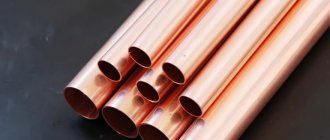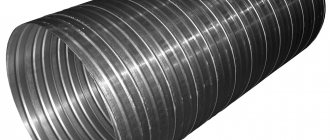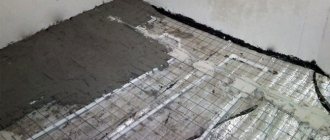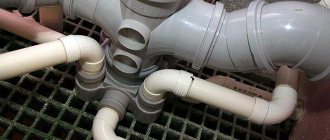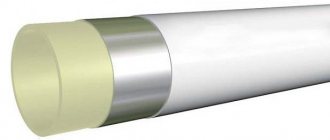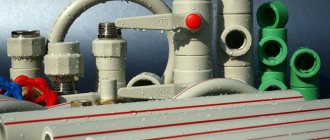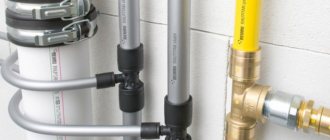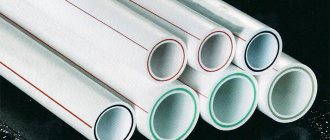In recent years, metal-plastic products are increasingly used when laying pipeline systems. The high interest in them is due to their unique capabilities: in addition to the fact that they are capable of delivering liquids with temperatures up to + 110 degrees, they can take the required shape at a given angle, while maintaining their sealed design.
The main technical characteristics of metal-plastic pipes are related to the fact that they are made on the basis of two well-known materials such as aluminum and polyethylene. Such pipes are often used in the installation of hot and cold water supply systems, heating, as well as gas mains and in other areas of human activity where there is a need to use durable and flexible pipes.
Production process
Not everyone can say what characteristics metal-plastic pipes have.
When starting to get acquainted with these products, the first thing you should do is get an idea of the features of their production, which allows you to make the right decision when choosing these products. The basis of metal-plastic structures is formed by two layers of PE-X polyethylene cross-linked at the molecular level, the space between which is filled with a layer of thin aluminum. To hold the layers together, a special adhesive is used , which depends on the company that produces metal-plastic products.
The strength properties of the pipe, as well as the flexibility inherent in polyethylene, are due precisely to the use of aluminum. To create a thin aluminum strip, two semicircular blanks are used , which are placed along their length in accordance with one of the patterns - overlapping or end-to-end. Ultrasonic welding is used for connection. Next, the pipes, both inside and outside, are covered with a layer of polyethylene, fixing it with special glue.
After this, it’s time for labeling, after which the products are formed into coils , and it is in this form that they become available to customers. If we consider all the layers that are present in the structure of metal-plastic pipes, we can distinguish the following:
- outer polyethylene;
- adhesive composition;
- aluminium foil;
- glue;
- inner polyethylene.
Thanks to the design used, it becomes possible to bring the linear expansion of metal and polyethylene to normal values. It is no coincidence that these products are painted white , which makes them attractive and at the same time eliminates the need to frequently renew the paint layer.
The use of polyethylene makes it possible to give the products a smooth surface on the inside, which prevents various types of suspensions and scale from settling on the walls. At the same time, due to the use of a protective layer of polyethylene, aluminum foil can effectively resist galvanic processes during the work of attaching metal fragments of pipelines. In addition, such a solution avoids the occurrence of condensation , which has a positive effect on the service life of metal-plastic products.
Area of use of metal-plastic products
These products can be used not only for the manufacture of pipelines used in water supply, heating and sewerage systems. There are other areas in which these products can be used:
- compressed air delivery;
- in the manufacture of air conditioning systems;
- during work on laying a high-voltage electrical network, where metal-plastic provides protection from force fields;
- in industry and agriculture: these products are often used in the installation of a network of pipelines used to deliver various liquid and gaseous substances.
Scope of application
Due to its unique characteristics, reliability and durability, metal-plastic is widely used both in private construction and in industrial enterprises, where it is used for installation:
- Compressor systems.
- Air conditioning and ventilation systems.
- Pipeline systems for liquid and gaseous media.
- Irrigation and watering systems.
- Electrical communications protection systems.
Here it is necessary to take into account that the use of metal-plastic has some limitations. Thus, the material cannot be used in networks with operating temperatures above 120°C, as well as in rooms with fire safety category “G” (having sources of sparks or radiant heat).
In private construction, small-sized products are in greatest demand, ideal for installing heated floors, heating and water supply systems.
Application of metal-plastic pipes taking into account parameters
There are several standard sizes of metal-plastic pipes. They differ in diameter, aluminum layer thickness and overall wall thickness. When choosing the appropriate sizes for a particular project, you should definitely take these parameters into account:
- 16x12 (external section - 16 mm, internal - 12, aluminum layer thickness - 0.2 mm, total wall thickness - 2 mm). Can be successfully used in small pipeline networks. The pipes themselves of such dimensions and the connecting elements for them are inexpensive, which makes it possible to obtain an effective and durable pipeline system for a reasonable price. Often used for taps and connecting meters.
- 20x16 external section – 20 mm, wall thickness – 2 mm, internal diameter – 16 mm, aluminum layer – 0.25 mm). Pipes of this size are often used in the construction of heated floors. Fittings for them will cost more, but the throughput of the pipeline will increase noticeably.
- 20x26 (external diameter – 26 mm, internal – 20, wall thickness – 3 mm). They are also used in the construction of heated floors and are suitable for installing risers. Due to the thickness of the walls, they have better resistance to pressure drops, which seems relevant for autonomous heating systems in private homes.
- 26x32. The main area of application is main heating and water supply networks.
- 32x40. Also used on main pipelines, including long sections.
- 40x50. They are used in production workshops, where they are used, among other things, for transporting chemicals.
We recommend that you read: How to choose the correct size of plastic pipes for various pipelines?
Restrictions on use
At the same time, it is necessary to take into account the limitations due to which metal-plastic products cannot always be used. Such pipes should be abandoned:
- when installing central heating systems that include elevator units;
- to comply with fire safety requirements in premises that represent category “G”;
- with small diameters, metal-plastic products are used for the manufacture of high-pressure pipelines with an indicator of more than 10 bar;
- if, at the place where metal-plastic products are used, there are nearby heat sources capable of generating temperatures of more than 150 degrees.
Temperature values.
If pipes are operated at constant temperature and pressure, then the products show their intended characteristics for a period equal to:
1.one hour at a temperature of twenty-seven degrees, the pressure is at a minimum threshold of 5.71 milliamps.
2.one hour, if the temperature is ninety-five degrees, with a minimum pressure threshold of 3.3 milliamps.
3.hundred hours at a temperature of 95 degrees, and the pressure with a minimum threshold of 2.93 milliamps.
4. one thousand hours with a temperature of ninety-five degrees, with a pressure at a minimum level of 2.57 milliamps.
Important! Metal-plastic products are resistant to high temperatures; pipes do not deform when reaching 110 degrees above zero for a short time.
Dimensions of metal-plastic pipes
One of the classification features of modern metal-plastic pipes is diameter.
Today there are products on sale in which this parameter is in the range of 16 -63 mm. The determining factor that is taken into account when constructing a certain design is the outer diameter of the pipe. If you plan to install a water supply system in a private house or apartment, then the best choice would be metal-plastic products with an outer diameter of 16-26 mm. In the case where it is planned to create water supply networks of a sufficiently long length in the house, where there is a large number of household and plumbing appliances, the choice is made on products with a diameter of 32 or 40 mm. When installing the main line, it is imperative to use heating pipes of a larger diameter , while for connection to devices it is necessary to choose pipes of a smaller diameter.
The length of metal-plastic structures, available commercially in the form of coils, is usually about 50-200 m.
Diameter of metal-plastic pipes.
During the design and installation of a pipeline, the diameter of the products should be selected correctly. It is necessary to take into account the load and purpose of the network.
The main sizes for water pipes are:
-16 millimeters.
Pipes with a cross-section of sixty-three millimeters are available for sale, but the products are rarely used.
Attention! For the plumbing system, pipes with a diameter of 16 or 20 millimeters are most often used; pipes with a cross-section of 40 or 48 millimeters are suitable for sewerage.
Advantages of heating pipes
The high level of performance of metal-plastic products is associated with their inherent advantages of polymer and metal, which are manifested in the following:
- high durability;
- environmentally friendly and non-corrosive;
- protection from the formation of contamination on the internal walls during the entire period of operation;
- the ability to actively resist chemically aggressive environments;
- low specific gravity and high ductility;
- high throughput: in this parameter, metal-plastic products exceed metal pipes of the same diameter by 1.3 times;
- no difficulties during installation, which can be performed without special knowledge or the use of complex equipment and tools;
- minimum amount of waste during installation;
- products can be laid in concrete and cement based mortar;
- low thermal conductivity coefficient: in this parameter, steel pipes are 175 times superior to metal-plastic pipes, and copper pipes are 1300 times superior;
- high level of noise protection, due to which it is very difficult to recognize any noise during water circulation, but metal pipes in this regard create great discomfort;
- resistance to static voltage accumulation;
- unlimited number of repair cycles: such work does not require the use of welding equipment and pipe bending devices;
- aesthetic appearance, which eliminates the need to regularly paint metal-plastic pipes;
- affordable price, which allows the vast majority of consumers to use these products.
Disadvantages of heating pipes
Although metal-plastic structures have many advantages, they also have certain disadvantages. The main one among them is that situations with sharp temperature fluctuations create the risk of leaks at the joints of pipes and fittings.
This happens due to the difference in the coefficients of thermal expansion that aluminum and polyethylene have. When the temperature of the coolant rises or falls sharply, this leads to the expansion of plastic, and this happens noticeably faster than aluminum. A similar situation occurs when the water cools. It is precisely because of these differences that the material of the pipes suffers, which primarily manifests itself in the areas of their connection.
Specifications
Most often, consumers choose metal-plastic pipes with a diameter of 16 and 20 mm. The table below clearly shows what technical characteristics such products have.
| № | Pipe characteristics | Diameter16mm | Diameter 20mm |
| 1 | Pipe wall thickness | 2,0 | 2.25 |
| 2 | Aluminum layer thickness | 0,2 | 0,24 |
| 3 | Weight of one linear meter of metal-plastic pipe | 115g | 170g |
| 4 | The volume of liquid contained in one linear meter of pipe | 0.113l | 0.201l |
The level of pressure in the pipeline is influenced by parameters such as the diameter of the pipe, as well as the thickness of the aluminum layer and the temperature of the transported coolant. Taking into account all the parameters that are presented in the table helps to simplify the task of choosing pipes for specific applications.
For heating pipes in which the coolant is heated to + 95 degrees, the operating pressure limit is 10 bar. If the liquid is heated to a temperature of no more than + 25 degrees, then a level of 25 bar can be considered an acceptable pressure indicator.
Characteristics of metal-plastic pipes
One of the main parameters is the internal diameter of metal-plastic pipes. This characteristic means the pipe's throughput rate. You need to know it exactly when choosing other components, for example, fittings (Figure 2).
Rice. 2 Fittings for metal-plastic structures
The next important factor when choosing metal-plastic pipes is their outer size. Also an important indicator of the size of metal-plastic pipes is the thickness of the pipe wall. It can be from 2 to 3.5 mm. You can see the size ratio in the table.

